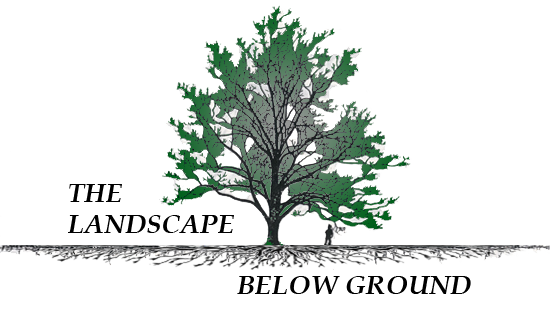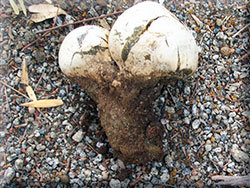


... roots extend 2‑3 times
the reach of the branches

The roots of the eucalyptus in these photos started to grow up the bank, then grow out & down the slope. This is the way roots grow on steep slopes. This is why large trees on steep slopes fail.


Roots grow sideways and then down banks.
![]()
They do not grow straight into
the bank because of nutritional requirements (oxygen, water,
etc.). They also do not grow
very far up a bank. This is due
to geotropism, which is the gravitional effect on growth regulators within the roots.
That is why roots grow down.
GRASS & TREES
![]()
Grass & trees do not thrive together in nature. Turf can reduce the amount of tree roots in topsoil by 90%. A tree with an underdeveloped root system will;
· be slower growing,
· predisposed to certain insect
· and disease problems as seen
· in the picture (right),
· have a shorter life span.


MULCH
Organic mulch is possibly the best and least expensive soil enhancer around. This is
Decomposing mulch may be the only nutrients your tree will ever need.
the way nature does it, as a tree mulches its own root system, returning nutrients to the soil.
A mulch covering should be 2 to 4 inches deep and extend outside the dripline.
Decomposing mulch may be the only
nutrients your tree will ever need.

MYCORRHIZAE
Mycorrhizae are fungi that form a symbiotic relationship with the root system of a plant. Mycorrhizae:
Deadman's foot,
Pisolithus tinctorius
This is a common mycorrihzae fungus found in hard, compacted or rocky soils in southern California. Very beneficial in reforestation, I commonly find it on hard rocky slopes around eucalyptus.